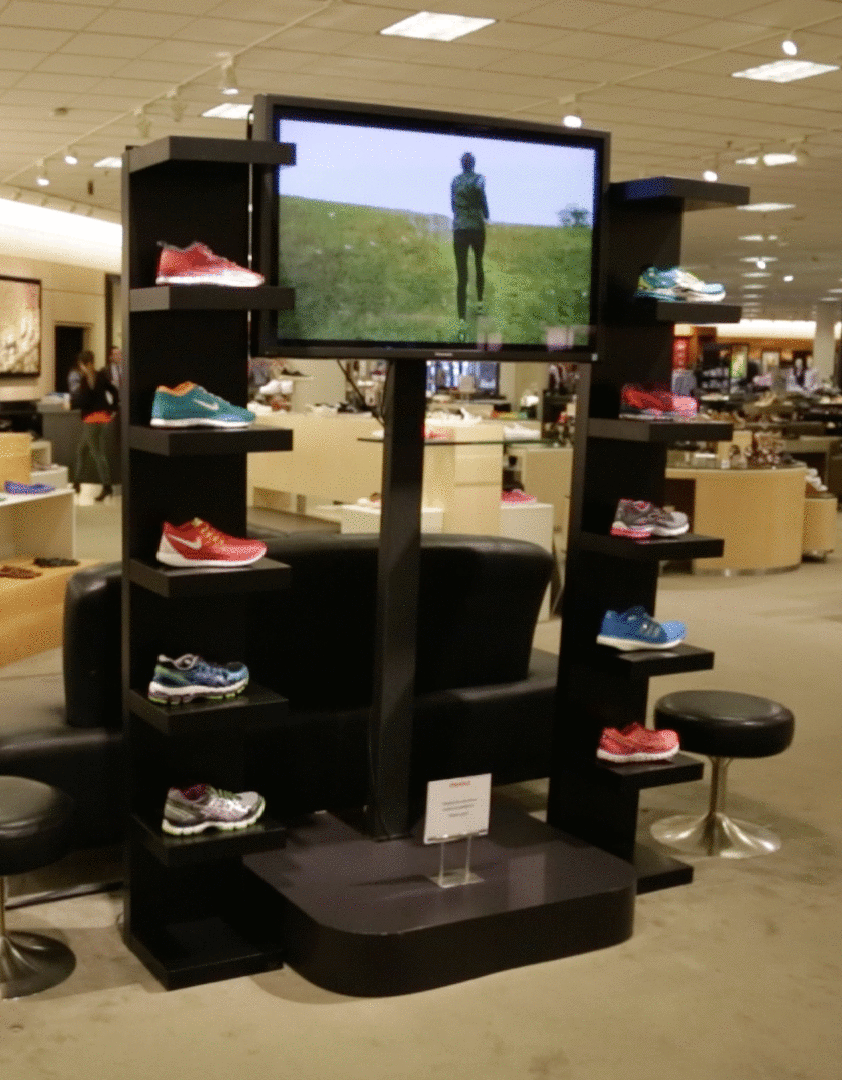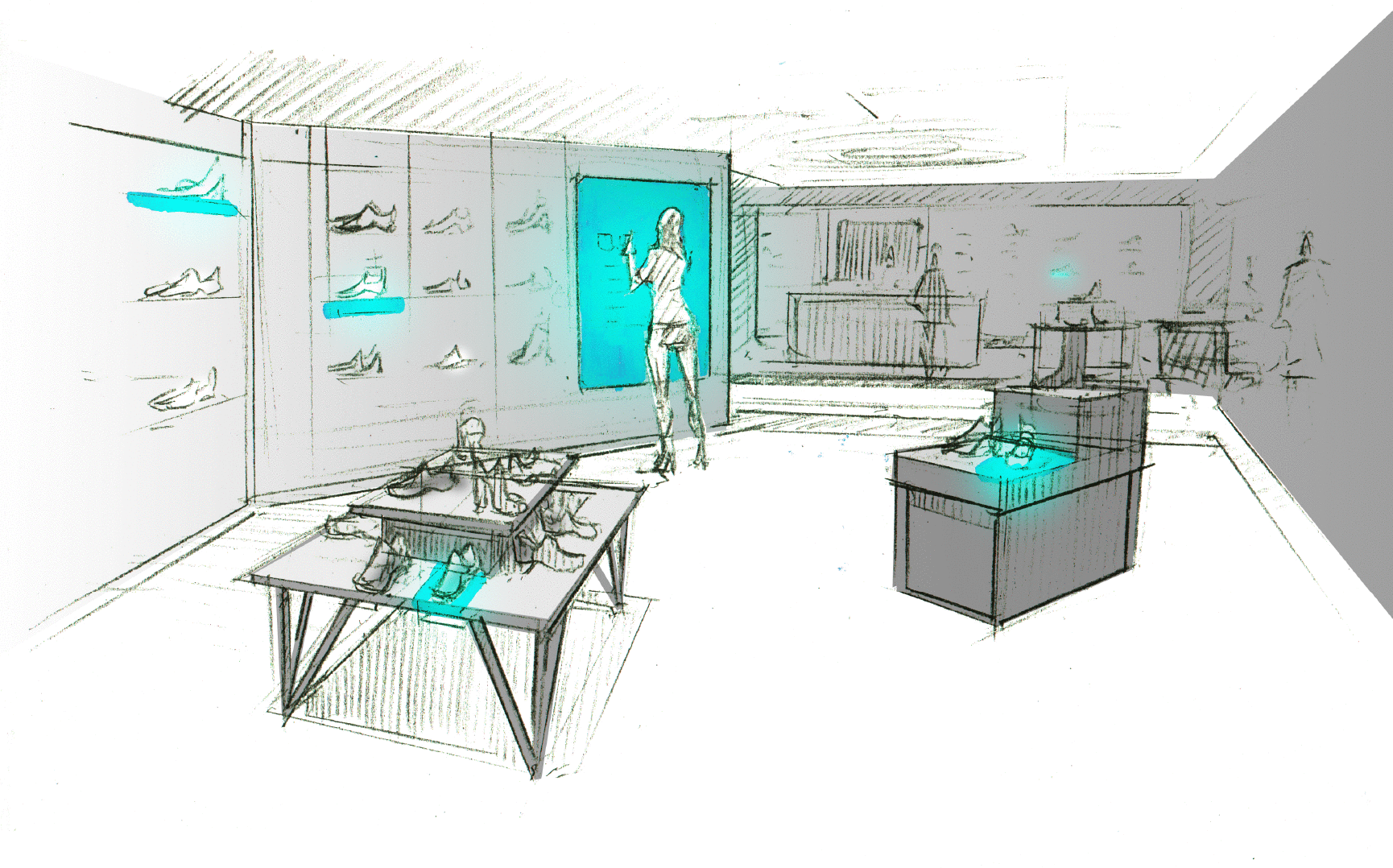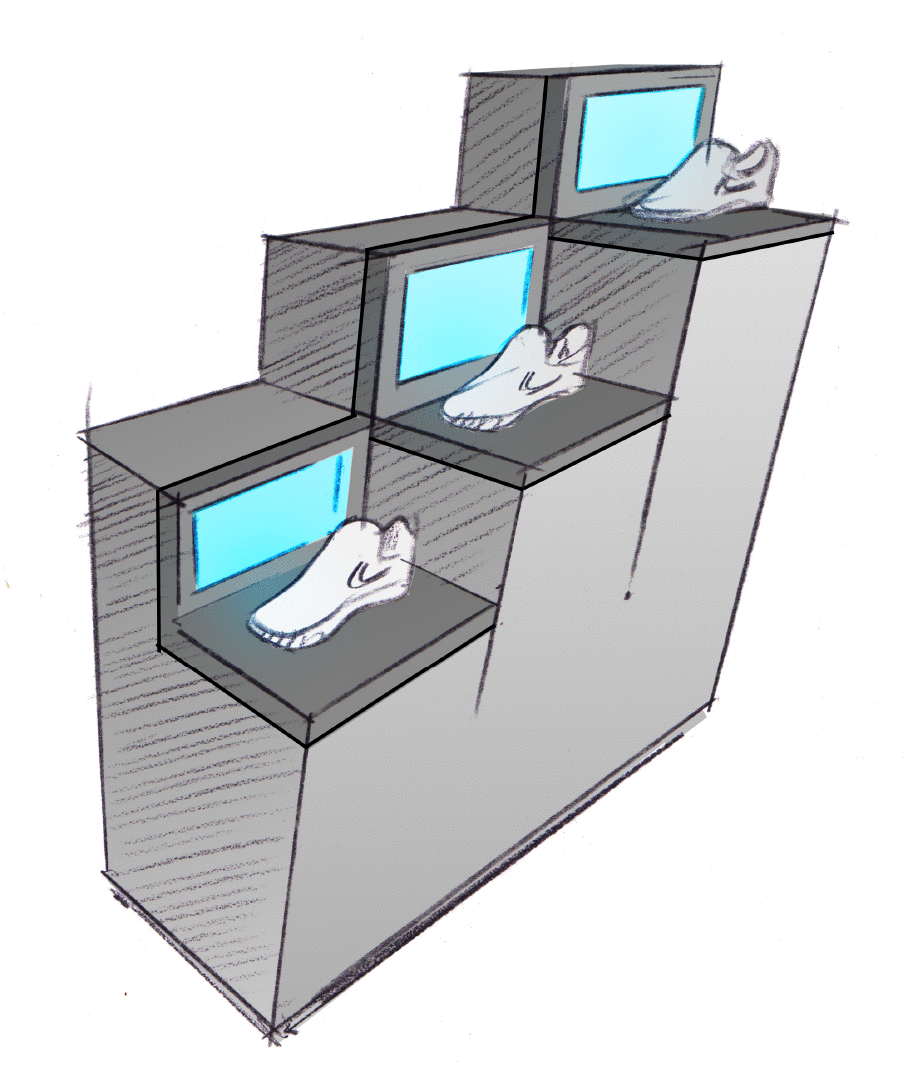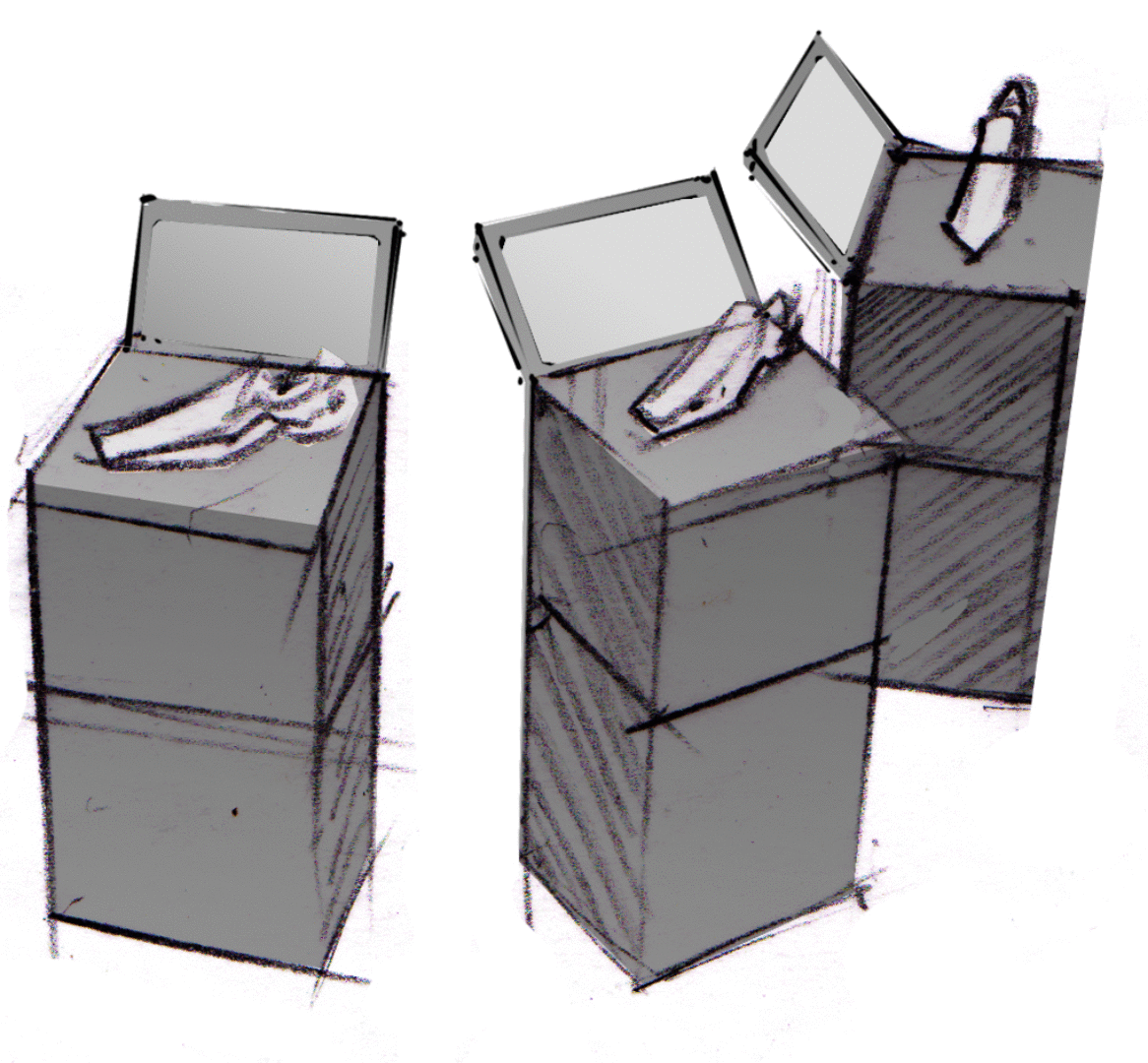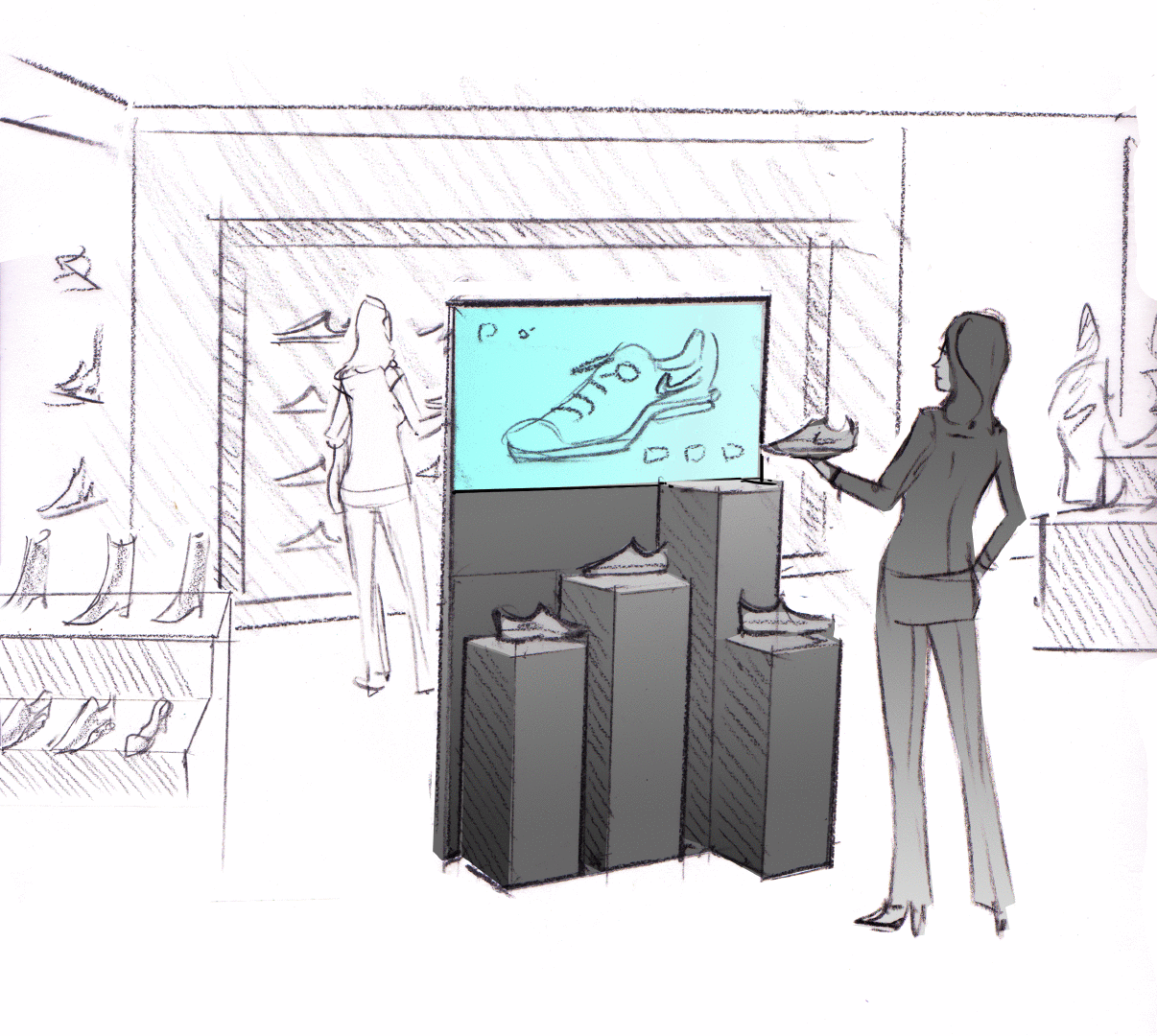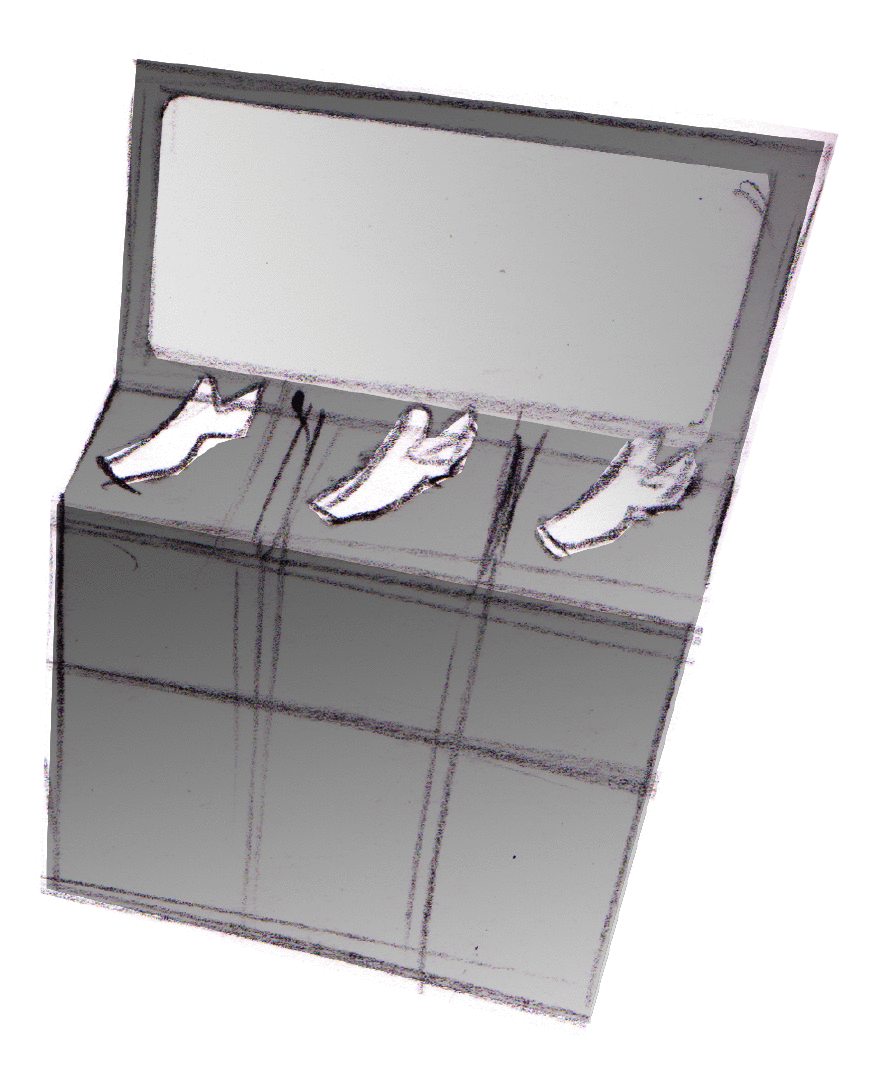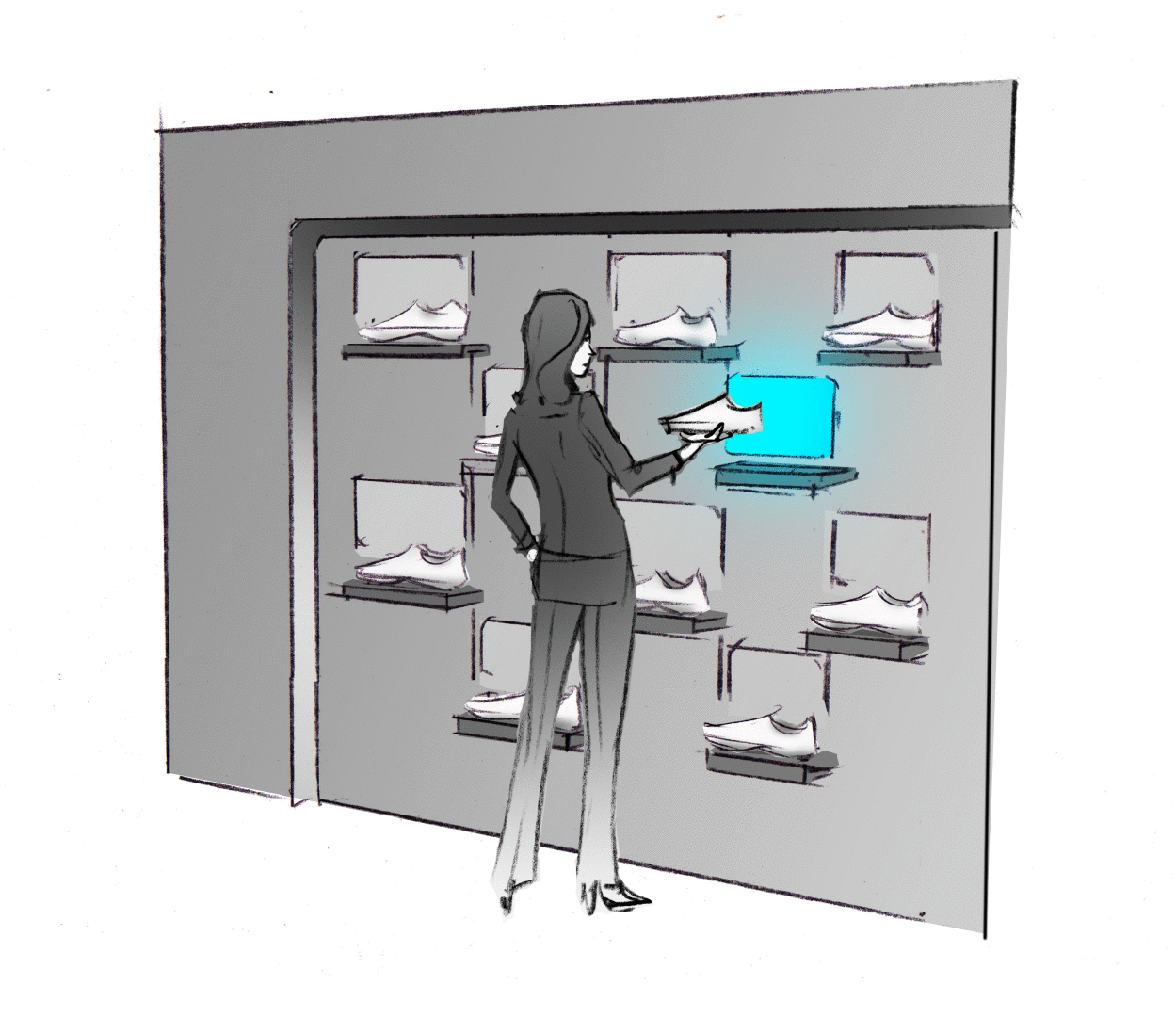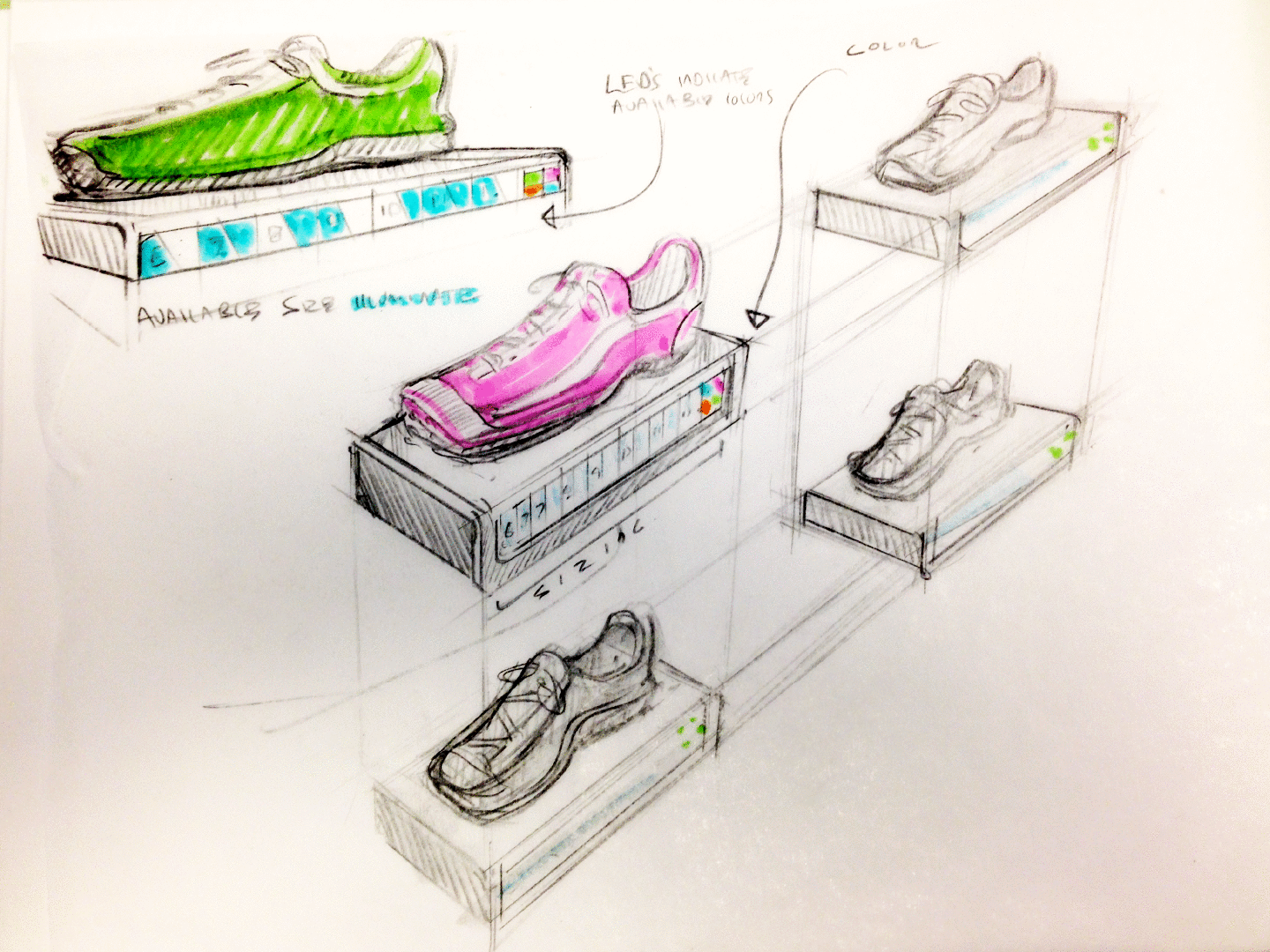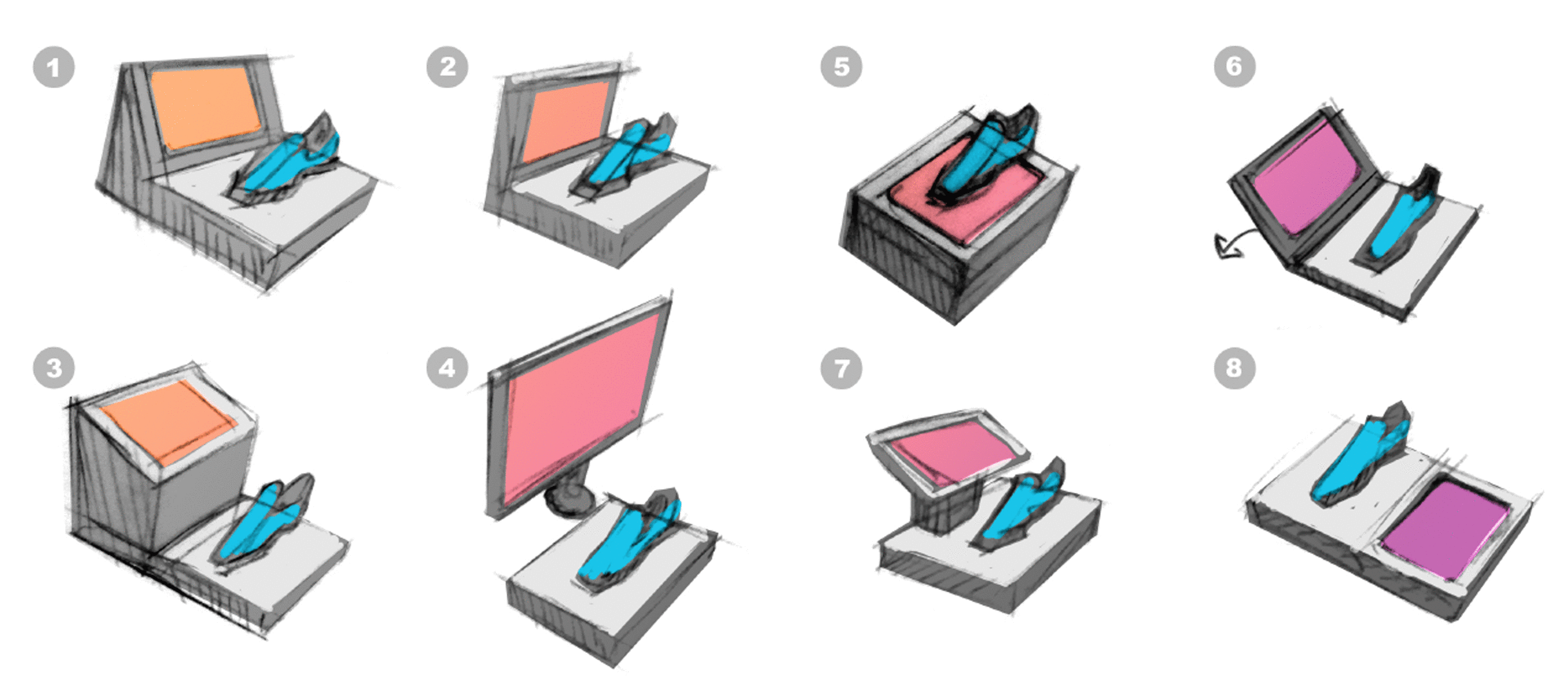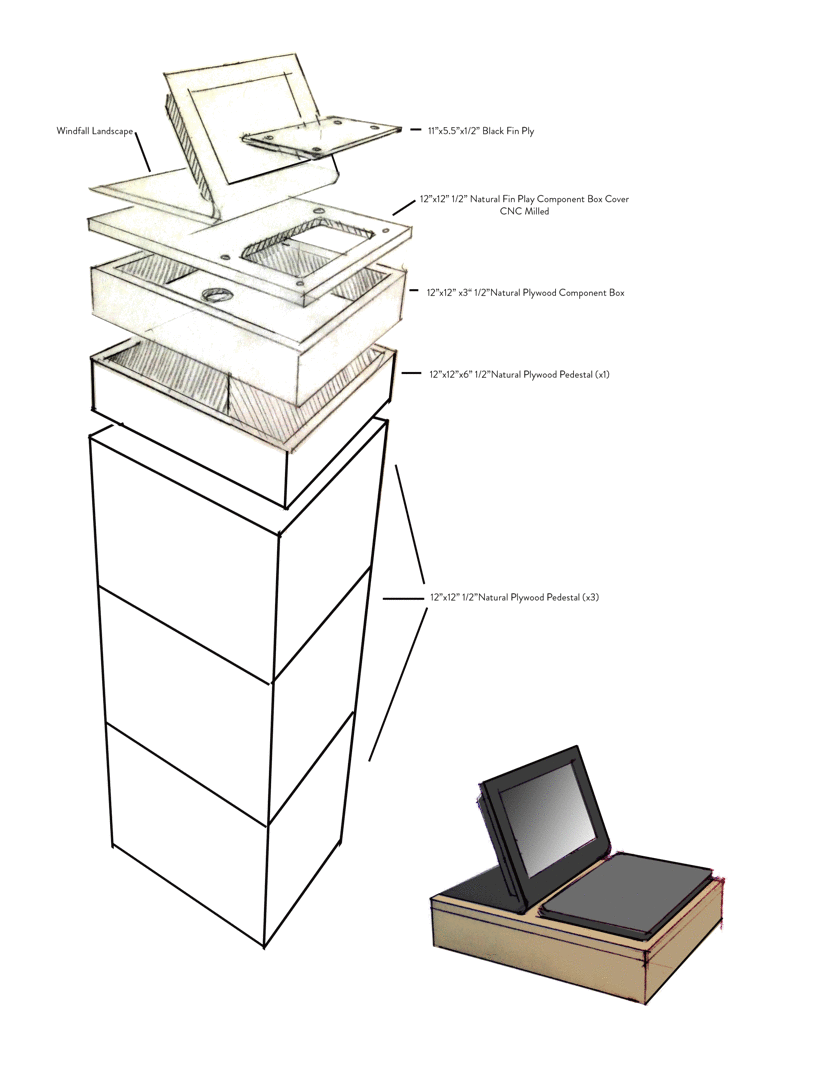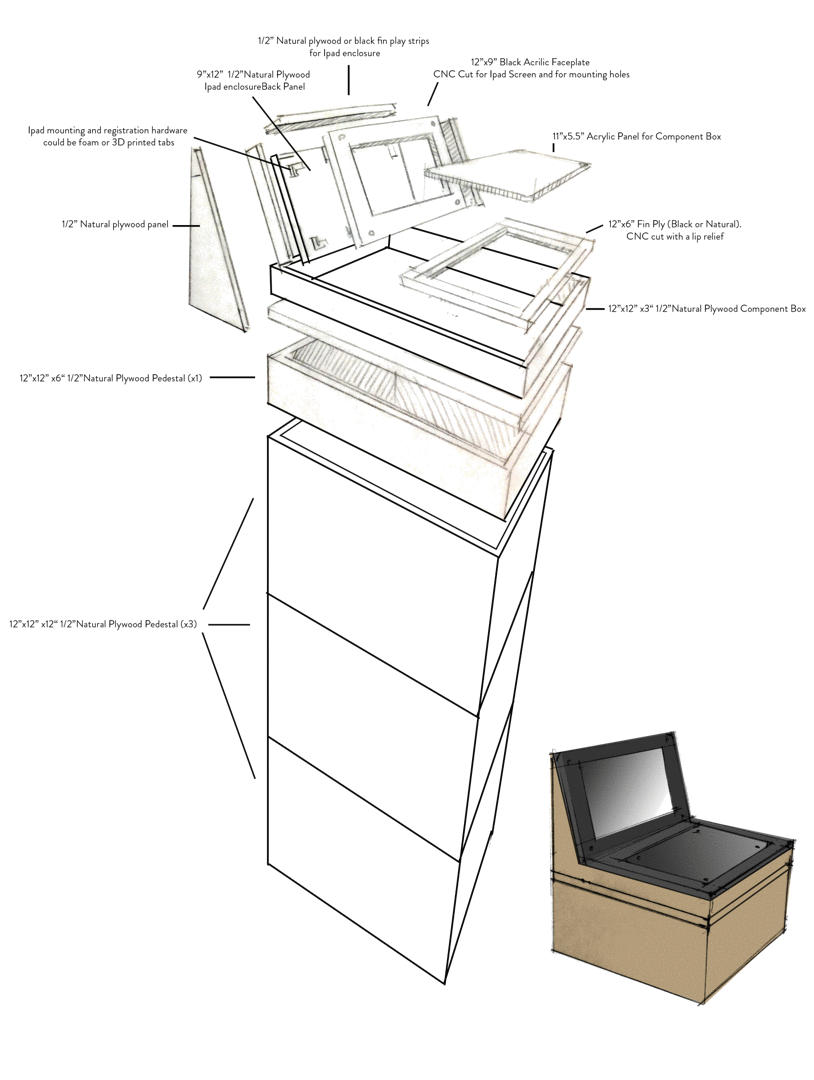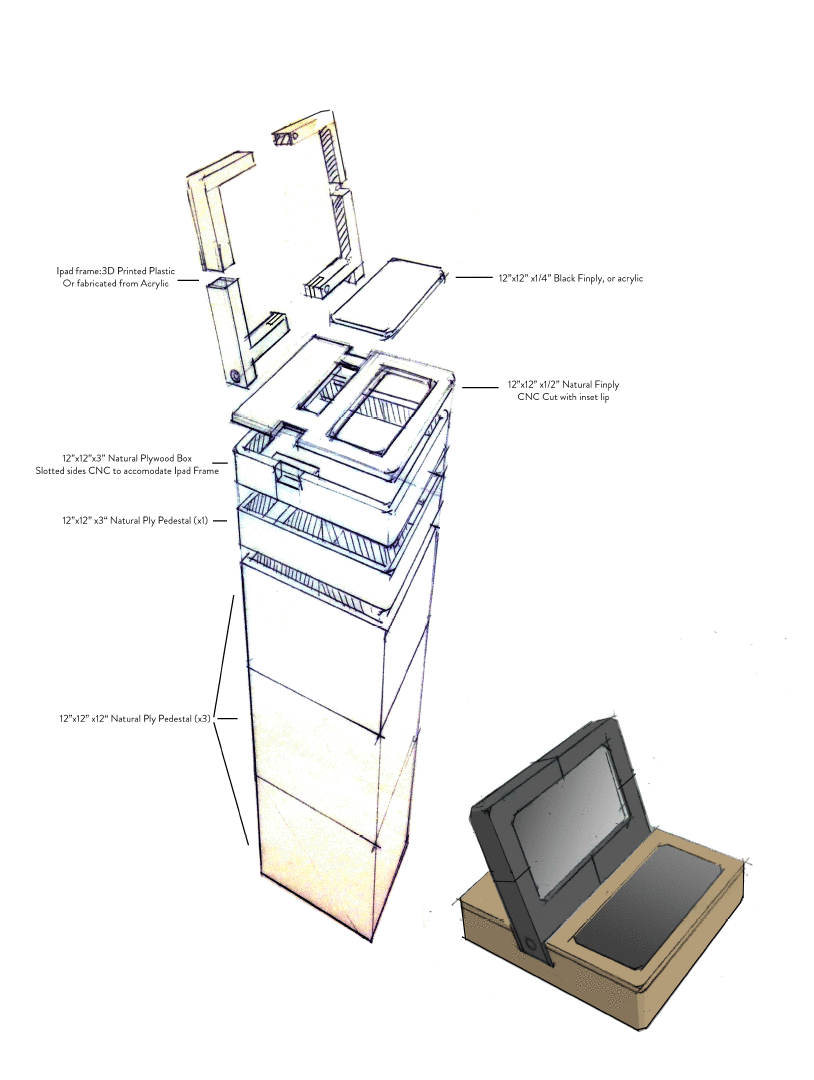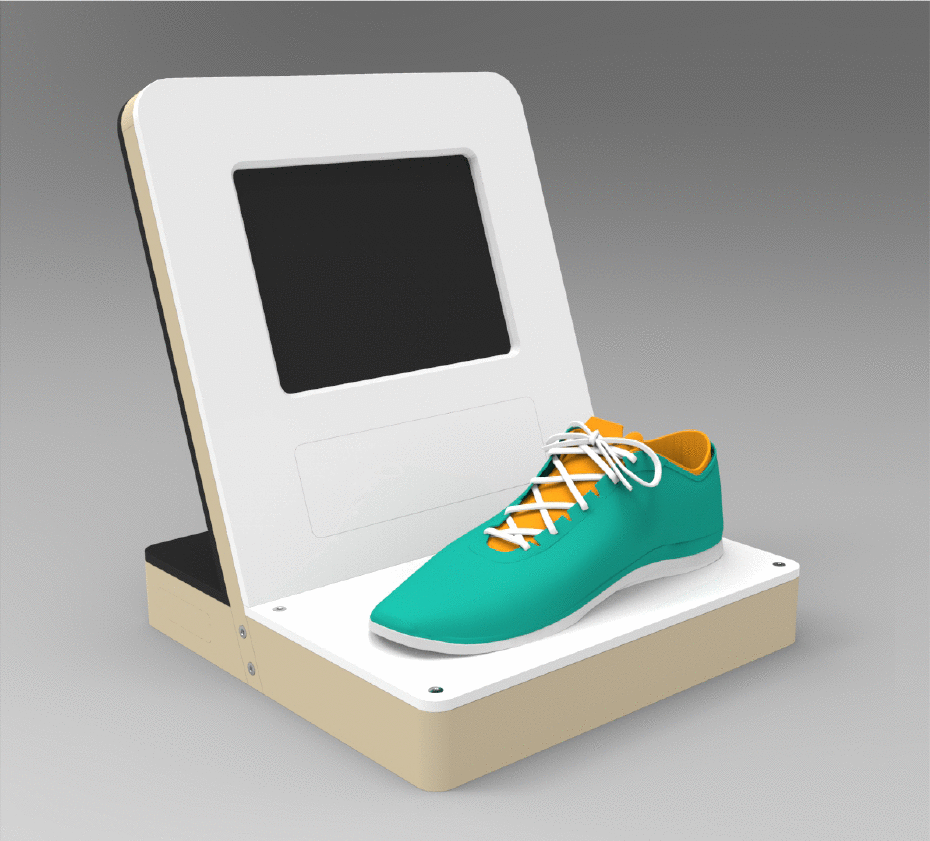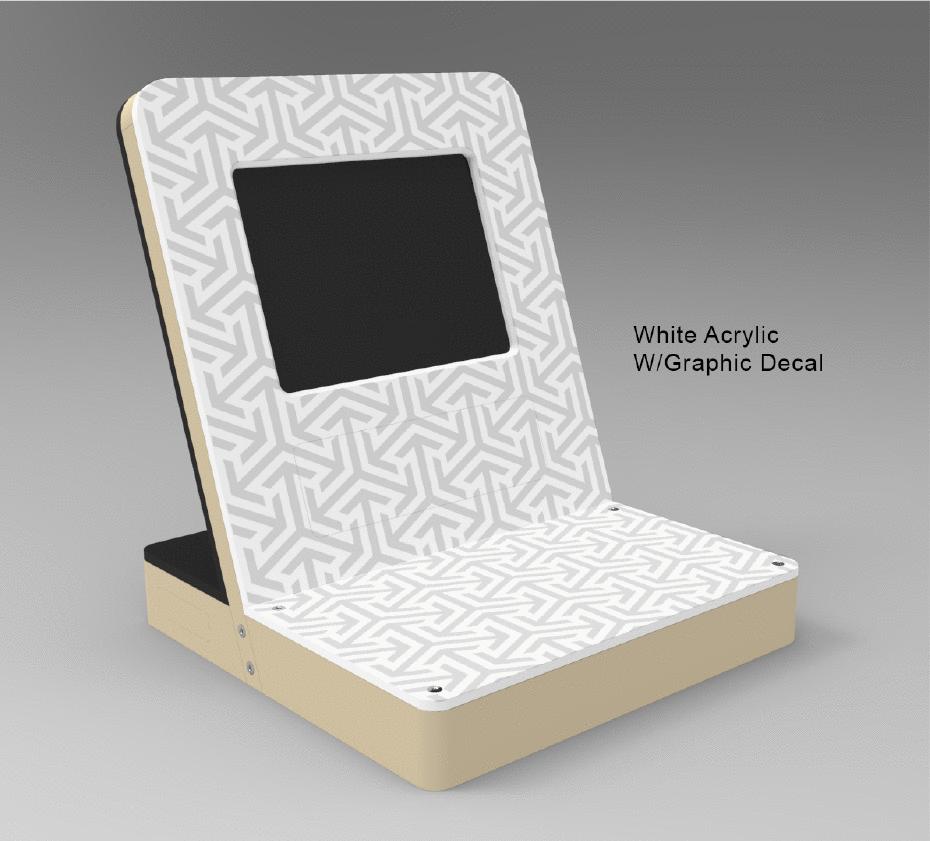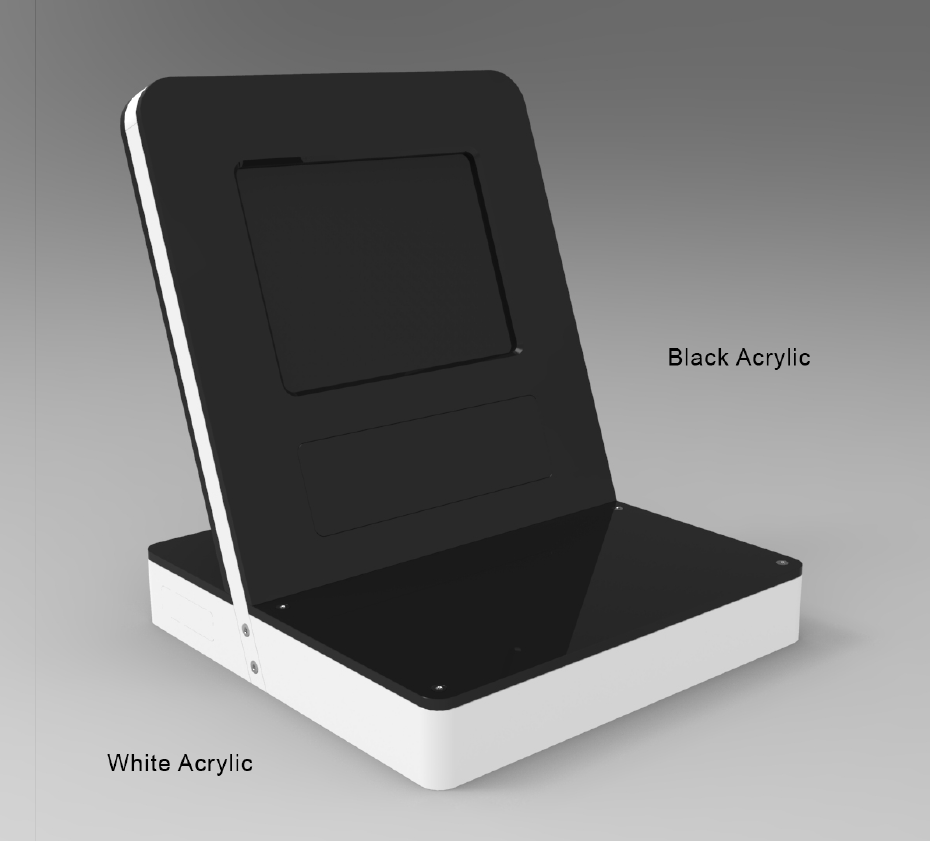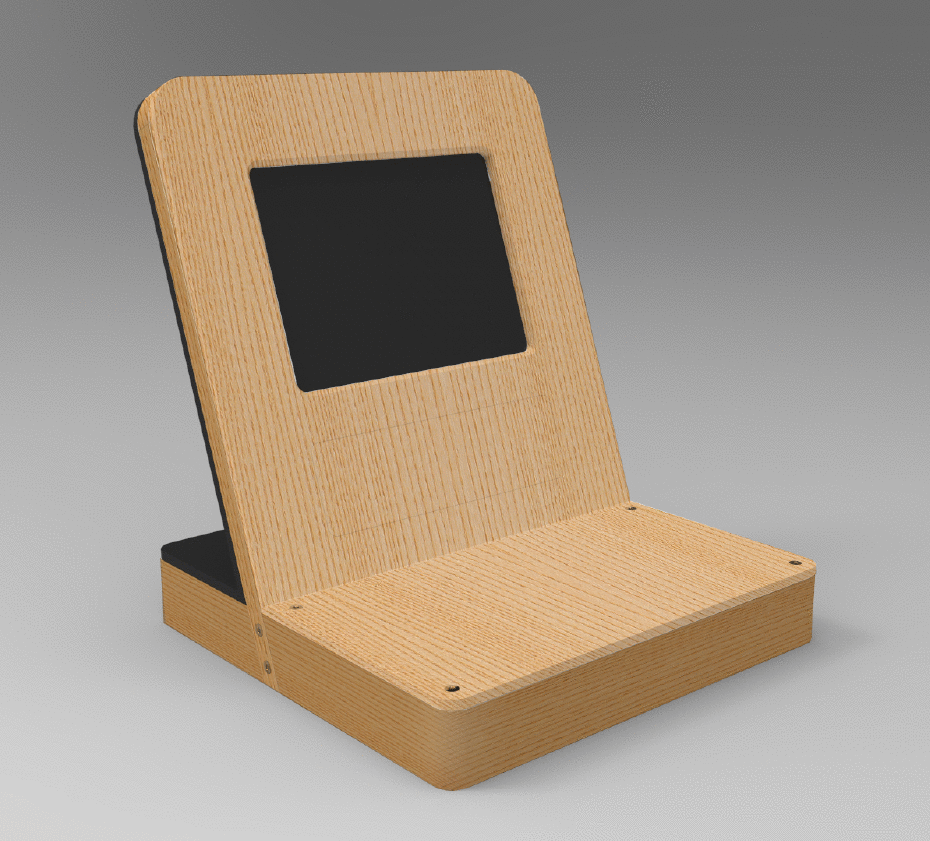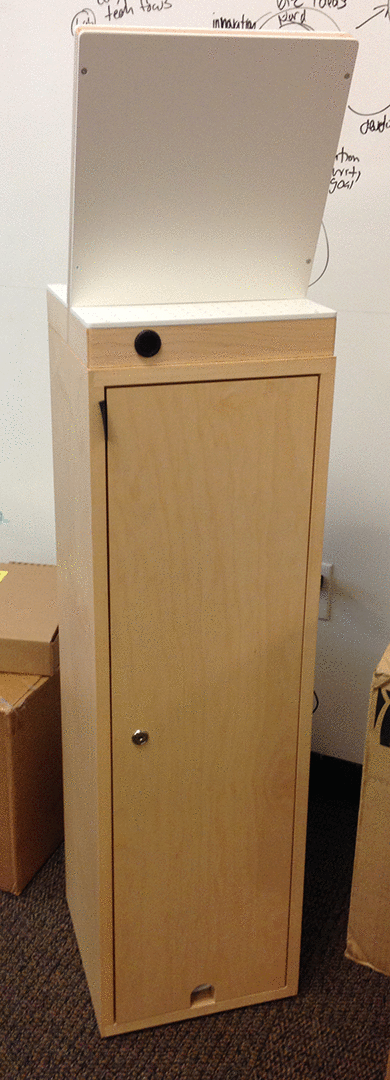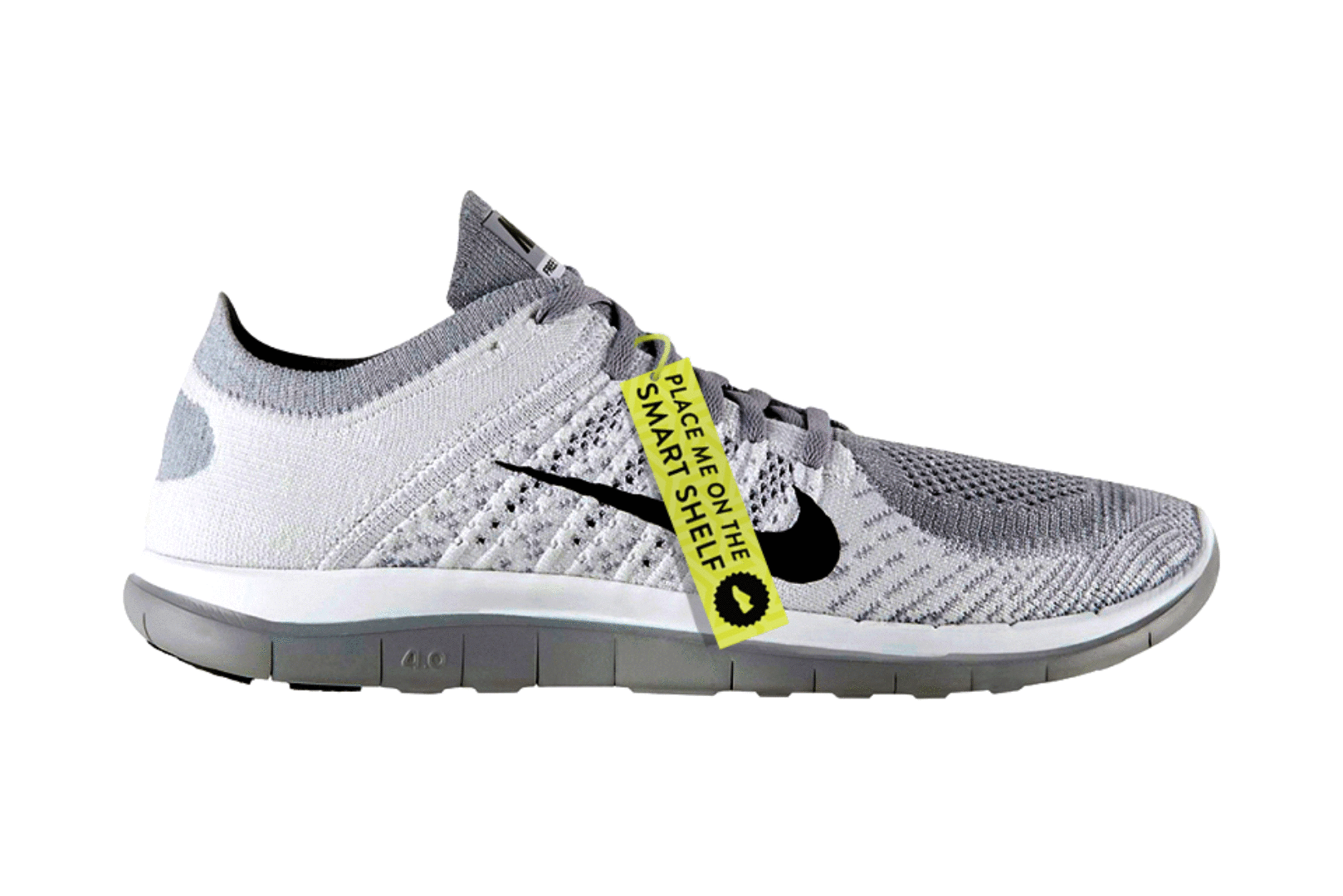How do we bring Nordstrom up to Speed on implementing RFID technology for Inventory Management? The Proposed benefits are consistently relevant knowledge of Inventory: Location, Time on the Floor, Loss and Shrinkage. For management this would allow for better informed decisions about how to stock a store, when to pull items, when to markdown items, making better use of employee time, reducing shrinkage, and reducing time spent in quarterly inventory audits.
For Employees this would greatly reduce time spent searching for clothes, time spent in inventory audits, time spent on returns and checkout. It would increase ability to provide relevant customer service and recommendations.
Customers. Provide easy access to product location, recommendations, sizes, colors. It would reduce time spent in checkout. It would require less need to ask Salespeople for help.
RFID Smart Shelf
The original smart shelf was an RFID device that displayed information about a collection of shoes. A video showcasing imagery of active lifestyles played on the screen. When a shoe was picked up, the screen would switch over to information about that shoe, such as available colors and sizes. Following a weekend of customer observation and interviews we determined that people were mostly unaware that the display contained this interactive feature. Furthermore people who did pick up shoes found it unintuitive that the display would switch once the shoe was taken off the shelf, and then didn't wish to view this additional information on a large public screen. With this feedback in mind . we set out to design a more intuitive and useable Smart Shelf experience.
Our first step was to consider the scope of the project. Ideation sessions lead to concepts depicting department wide deployment of this technology one hand, and small focused micro displays on the other. For cost, scale, and testing purposes we chose to focus on an individual kiosk that would display information about shoes.
The initial Smart Shelf was activated by removing a shoe that was displayed. We determined that for this project to be a successful test that a customer would need to be able to get information about any shoe that they were interested in. This meant either provide a display for every single shoe, or provide a central kiosk where customers could place their shoes and gain additional information. These concepts depict some of these different architectures. Beyond the RFID reader we would need to consider what sort of device would display the information to the customer. This could take the form of a wall of screens, a feed transmitted to a personal mobile device, lower resolution LCD displays at the shelf level, or a single centralized screen. While screens and displays dedicated to each product was intriguing and would require the least amount of effort by the customer, the costs would have been prohibitive. We transitioned from a pull to a push model.
Form Factor
The form factor quickly settled into a semi moveable display that could be placed on top of a table or an elevated kiosk. The display would include the enclosure for the RFID technology and for a touch enabled tablet.
I developed multiple concepts for how the displays could be constructed. Since this was a live test, the displays needed to work within the Nordstrom Store environment but also be very budget conscious. Materials would primarily be manufactured wood mixed with either paint, metal, or plastic. Security was also a concern since this display would house expensive hardware. Construction design took into account the ability to lock the display and hardware in place, but also to easily access the components for development and maintenance.
A model was constructed in Solid Works with all routing included.
Different materials and finishes were rendered. A preproduction concept included a removable brand plate to allow for special promotions.
The Final Smart Shelf
A video of the functioning Smart Shelf in store with shoe interaction
